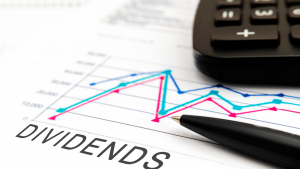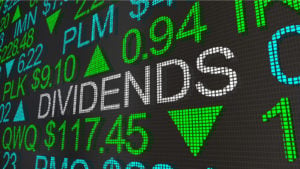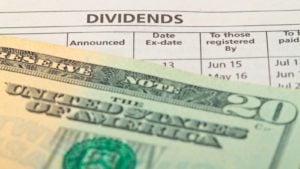While it’s always good to have decent exposure to investments yielding passive income, you also want to consider reliable dividend stocks with low-payout ratios. By that, I’m referring to enterprises that pay their dividends via a relatively small pool of their earnings. Generally, companies that feature a payout ratio between 20% to 50% offer confidence for yield sustainability.
That’s not to say that companies featuring high-payout ratios are doomed to slash their dividends. However, the advantage is that enterprises undergird dividend stocks with low-payout ratios centered on “margin.” Should economic circumstances worsen, low-payout businesses own more room to protect their dividends and reward their shareholders. In other words, not all passive-income-providing companies stand on equal footing. Below are reliable dividend stocks with low-payout ratios.
| HRB | H&R Block | $35.45 |
| HMC | Honda Motor | $26.79 |
| HPQ | HP. | $29.89 |
| IX | ORIX | $83.60 |
| PFE | Pfizer | $41.35 |
| LYB | LyondellBasell | $95.20 |
| SBSW | Sibanye Stillwater | $8.27 |
H&R Block (HRB)

Source: jittawit21/Shutterstock.com
With tax day fast approaching, you might think that H&R Block (NYSE:HRB) is about to lose its relevance. However, the Covid-19 pandemic sparked multiple paradigm shifts, including in the workforce. Long story short, worker bees may consider a transition to the gig economy, which would benefit H&R Block’s consultancy services. After all, gig workers feature tax profiles similar to “real” businesses.
Another factor benefitting HRB is its relatively undervalued profile. Yes, shares gained nearly 34% of equity value in the open market. However, HRB features a modest forward multiple of only 8.39. As a discount to projected earnings, the company ranks better than 80% of the personal services industry.
Moving onto passive income, H&R Block carries a forward yield of 3.29%. Even better, its payout ratio sits at 27.87%. Therefore, it’s easily one of the dividend stocks with low-payout ratios to consider. Finally, Wall Street analysts peg HRB as a consensus hold. Nevertheless, their average price target is $38, implying nearly 8% upside potential.
Honda Motor (HMC)

Source: iQoncept/shutterstock.com
A company that gets plenty of attention among its customers but not so much in the investment field, Honda Motor (NYSE:HMC) nevertheless offers an intriguing opportunity regarding dividend stocks with low-payout ratios. As a provider of reliable vehicles, Honda represents an indelible component of global roadways. Should economic circumstances worsen, vehicular reliability will likely command a premium.
Financially, HMC may attract investors because of its undervalued nature. In particular, the market prices shares at a forward multiple of 7.15. As a discount to earnings, Honda ranks better than 75.28% of the competition. Also, it’s a profitable enterprise, featuring a net margin of 4.32% that beats out 60.87% of rivals. Regarding passive income, Honda carries a forward yield of 3.34%.
Also, its payout ratio sits at 23.12%, again easily making it one of the dividend stocks with low-payout ratios. Currently, no one covers HMC. However, Jefferies analyst Takaki Nakanishi rated shares a buy nine months ago, with a $31.51 price target implying 19% upside potential.
HP (HPQ)

Source: Shutterstock
A consumer technology specialist, HP (NYSE:HPQ) provides various computer equipment and digital accessories. On the surface, forecasts about the death of the personal computer might rattle prospective investors of HP. However, HPQ performed well so far this year, gaining nearly 10% of equity value. Still, it remains risky overall, losing almost 18% in the past 365 days.
Despite challenges, HPQ stands poised to attract contrarians of dividend stocks with low-payout ratios. First, the market prices HPQ at a forward multiple of 8.76. As a discount to projected earnings, the tech firm ranks better than 87.87% of the underlying industry. Also, HP features strong expansionary trends, particularly its three-year revenue growth rate of 15.9%.
For passive income, HP carries a forward yield of 3.58%. That’s notably above the tech sector’s average yield of 1.37%. As well, its payout ratio sits at 29.19%. To be fair, HPQ carries a moderate sell rating. However, analysts may be overlooking its robust financials.
ORIX (IX)

Source: Shutterstock
Probably an unknown to most investors in the U.S., ORIX (NYSE:IX) is a Japanese diversified financial services group. Per its corporate profile, ORIX offers leasing, lending, rentals, life insurance, real estate financing and development, venture capital, investment, retail banking, commodities funds, and securities brokering. Since the Jan. opener, IX gained a bit over 1%.
In the trailing one-year period, IX lost more than 19% of its equity value. However, for contrarians seeking dividend stocks with low-payout ratios, ORIX could be intriguing. Notably, the market prices IX at a trailing multiple of 8.15. As a discount to earnings, ORIX ranks better than 65.26% of the firms in the credit services industry. Operationally, the company features a respectable three-year sales growth rate of 8.9%. Also, its return on equity (ROE) is 9.57%, reflecting a high-quality business. Regarding passive income, ORIX carries a forward yield of 3.81%. As well, its payout ratio sits at 23.55%.
Pfizer (PFE)

Source: Shutterstock
Although one of the hottest dividend stocks with low-payout ratios during the worst of the Covid-19 crisis, Pfizer (NYSE:PFE) lost some of its edge. With fears of Covid contraction fading substantially, Pfizer lacks another impetus. Therefore, since the beginning of this year, PFE dropped more than 20% in equity value. In the past 365 days, it’s down almost 21%.
Still, contrarians may have an enticing opportunity here. For example, the market prices PFE at a forward multiple of 11.96. As a discount to projected earnings, Pfizer ranks better than 69.11% of the drug manufacturing industry. Also, it trades at 8.98 times free cash flow (FCF). In contrast, the sector median value is 22.51 times. Looking at the passive income department, Pfizer carries a forward yield of 4.02%. That’s much higher than the healthcare sector’s average yield of 1.58%. Also, its payout ratio comes in at 42.25%, which is still respectably low.
LyondellBasell (LYB)

Source: Shutterstock
Based in the Netherlands, LyondellBasell (NYSE:LYB) is a chemical company. Per its public profile, LyondellBasell is the largest licensor of polyethylene and polypropylene technologies. Given its everyday relevancies for various industrial applications, it’s no surprise the market responded well to LYB. Since the Jan. opener, it’s up nearly 12%. However, in the trailing year, it’s down more than 9%.
Nevertheless, LYB is almost sure to attract contrarian investors of dividend stocks with low-payout ratios. In particular, the market prices LYB at a forward multiple of 10.14. As a discount to projected earnings, the company ranks better than 75.16% of the competition. In addition, LYB trades at 0.61 times trailing sales, lower than the sector median value of 1.25 times.
Also, LyondellBasell features a three-year revenue growth rate of 16.12%. Its FCF growth rate during the same period is 26.2%. Both stats rank in the top half of the underlying sector. Finally, regarding passive income, LyondellBasell carries a forward yield of 5.07%. Its payout ratio comes in at 44.09%, a respectable tradeoff considering the generous yield.
Sibanye Stillwater (SBSW)

Source: Shutterstock
Located in South Africa, precious metals miner Sibanye Stillwater (NYSE:SBSW) offers a tempting proposition among dividend stocks with low-payout ratios. To be fair, it’s not the most stable enterprise. So far this year, SBSW dropped over 23% of equity value if that tells you anything. However, with gold prices generally rising amid broader economic concerns, SBSW could become a cynical beneficiary.
For sure, Sibanye ranks as a speculative opportunity among dividend stocks with low-payout ratios. In the past 365 days, it dropped 50%. However, SBSW trades at a forward multiple of 6. As a discount to projected earnings, Sibanye ranks better than 76.32% of the field. Also, the company’s three-year revenue growth rate stands at 20%. Its net margin comes in at 13.3%. Both stats rank in the industry’s upper half. Lastly, Sibanye carries a forward yield of 6.4%, which should raise eyebrows. Even better, its payout ratio sits at 29%.
On the date of publication, Josh Enomoto did not have (either directly or indirectly) any positions in the securities mentioned in this article. The opinions expressed in this article are those of the writer, subject to the InvestorPlace.com Publishing Guidelines.

